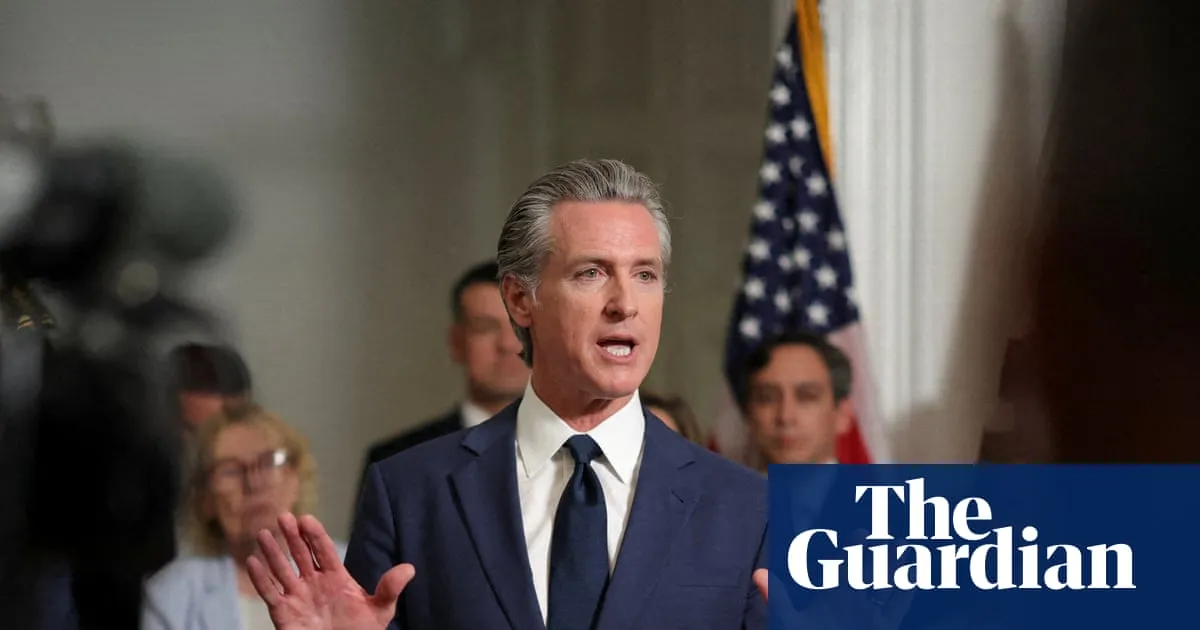
In a bold move amid ongoing redistricting battles, California Governor Gavin Newsom has declared that the state will draw new electoral maps after former President Donald Trump “missed” a crucial deadline on Tuesday night. This announcement escalates tensions between Democratic and Republican states engaged in a fierce struggle over congressional district boundaries.
“DONALD ‘TACO’ TRUMP, AS MANY CALL HIM, ‘MISSED’ THE DEADLINE!!!” Newsom’s office proclaimed on social media, employing a cheeky tone reminiscent of Trump’s own social media style. The post further stated, “CALIFORNIA WILL NOW DRAW NEW, MORE ‘BEAUTIFUL MAPS,’ THEY WILL BE HISTORIC AS THEY WILL END THE TRUMP PRESIDENCY (DEMS TAKE BACK THE HOUSE!).” This announcement sets the stage for a significant political showdown as Newsom prepares for a “BIG PRESS CONFERENCE THIS WEEK WITH POWERFUL DEMS AND GAVIN NEWSOM — YOUR FAVORITE GOVERNOR — THAT WILL BE DEVASTATING FOR ‘MAGA.’”
In his social media posts, Newsom utilized a series of snarky, all-caps tweets that mimic Trump’s writing style, highlighting the ongoing tensions. The nickname “Taco,” which stands for “Trump always chickens out,” was coined in response to Trump’s inconsistent deadlines on redistricting efforts.
As several states engage in the redistricting wars, Newsom and other Democratic leaders have vowed to retaliate against Republican-led states like Texas, which has been at the forefront of this electoral reshaping. Texas Democrats previously disrupted a Republican plan to pass a new congressional map by leaving the state. While the Texas Senate managed to pass a new congressional map on Tuesday, it is unlikely to gain full legislative approval due to a quorum-break caused by the walkout.
In a letter addressed to Trump on Monday, Newsom advocated for the congressional map-making process to be managed by independent commissions rather than partisan legislative bodies. He stated, “I would happily stand down if other states abandoned their redistricting effort.” However, he asserted, “California cannot stand idly by as this power grab unfolds.” This statement underscores Newsom's commitment to ensuring fair representation in the upcoming elections.
Newsom's office further summarized his letter in another social media post directed at Trump, saying, “DONALD TRUMP, IF YOU DO NOT STAND DOWN, WE WILL BE FORCED TO LEAD AN EFFORT TO REDRAW THE MAPS IN CA TO OFFSET THE RIGGING OF MAPS IN RED STATES.” The post concluded with a willingness to halt their efforts should other states cease their redistricting initiatives.
During a press conference alongside several Texas lawmakers who had broken quorum, as well as California’s legislative leaders, Newsom outlined a plan to present voters with an initiative to override the existing congressional maps created by an independent commission. This new proposal aims to create five additional Democratic-leaning seats in the state legislature.
Newsom expressed confidence that California voters would approve this initiative, anticipating that the state legislature would act swiftly to ensure the measure is placed on the ballot this November. The push for these changes comes amid Trump's defense of the Texas redistricting plan, where he argued that he is “entitled to five more seats” based on winning the state’s popular vote in the 2024 presidential election. However, this argument has been challenged, as winning the popular vote does not guarantee additional congressional seats for a president’s party.
Despite Newsom's vigorous efforts, the White House is strategizing to rally other red states in this redistricting confrontation. Last week, Vice President JD Vance traveled to Indiana to engage with state Republican leaders and lobby for their involvement in the redistricting efforts. Moreover, Republicans are actively targeting states such as Ohio and Missouri as they seek to solidify their positions in this political battle.
As the redistricting saga unfolds, all eyes will be on California and its governor as they navigate this complex political landscape, aiming to reshape the future of electoral representation in the state.